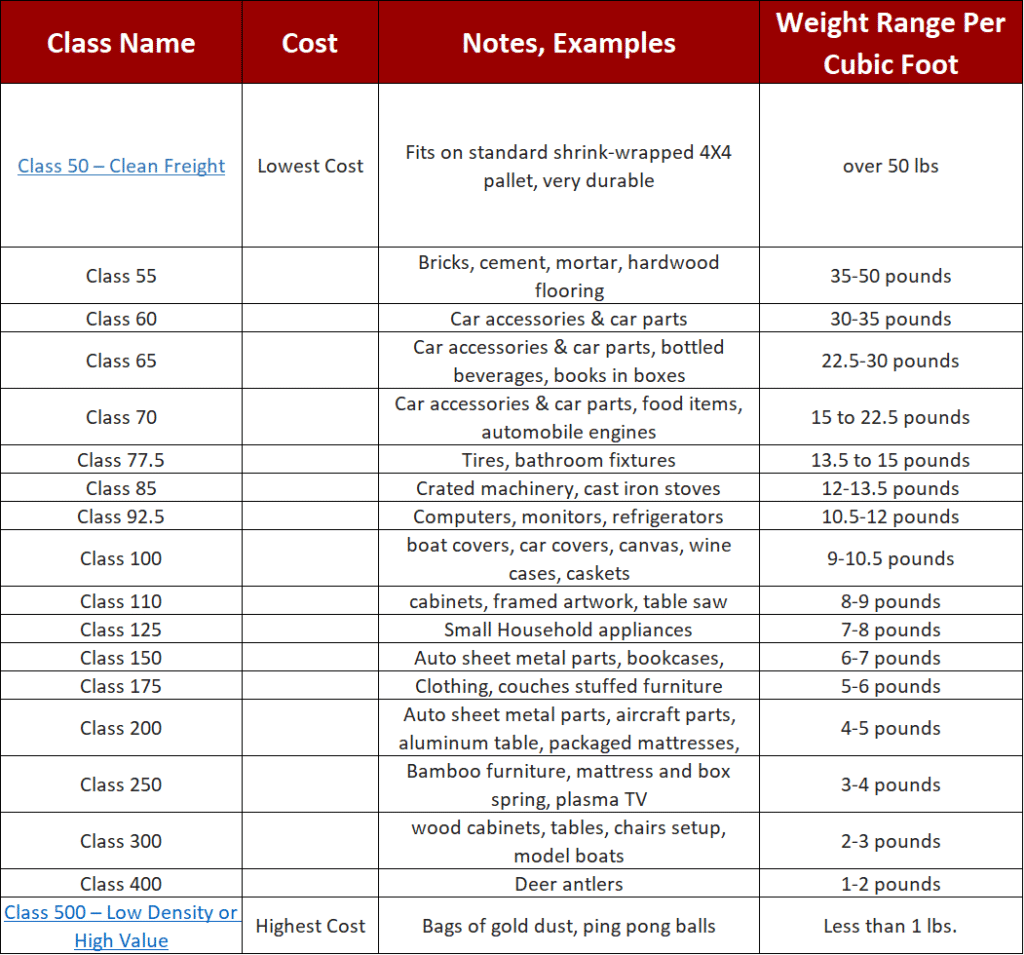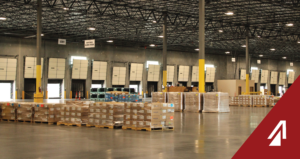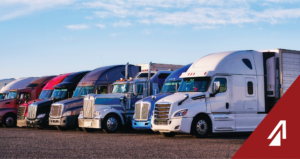More companies are finding the benefits of shipping their freight consolidated; but getting started can be tricky if you are not familiar with the freight terms and obligations. For instance, freight pricing is most often determined by the freight’s class as well as origin and destination. Freight class is a standardized system for classifying commodities to help determine a fair, unbiased price. If you are not aware of what class your freight is, you could be paying more than you think. Take a look at this quick guide to find out what class of freight you are shipping.
Getting Started
Nearly every item is given a freight class or category to determine how it can be shipped or shipping price. These classes and categories are determined by the National Motor Freight Traffic Association (NMFTA) and each item is given a NMFC number. Items fit into one of 18 classifications ranging from class 50 (least expensive) to class 500 (most expensive).
What Determines Freight Class?
Most carriers and package handlers (like UPS, FedEx, etc.) use four transportation characteristics to determine freight’s class.
• Stability: This describes how well your freight is able to travel with other freight. Some characteristics like flammability, perishability, or hazardous material prevent commodities from being shipped with other freight, and that increases the cost.
• Density: Freight’s density is the measurable space an item needs in pounds per cubic foot. Items that are more compact and have a higher density are cheaper to ship than bulky, lighter ones.
• Handling: This refers to how carefully the freight must be dealt with or how much trouble something is to move. There are multiple factors that go into ease of handling such as an item’s shape, size, weight, fragility, or hazardous properties. Items that are more difficult to handle have a higher freight class and are more expensive to ship.
• Liability: The freight’s risk of damage, theft, or probability of causing damage to other freight help determine its liability. The freight’s value also determines class. Freight with a greater risk to the carrier is a higher class.
The majority of freight is reviewed with these characteristics and is given a freight class. Here is a breakdown of the 18 classes from NMFTA.

What if My Freight Does Not Fit Into a Class?
Some freight is not able to be configured into an exact weight class because of the amount of variability in the product type. (E.g. wooden table – there is not standard size. The table could be a large, heavy formal dining room table or a small coffee table. Each is a different size, weight, and shape.) So, instead, this freight is priced based on density. NMFTA helped guide with density prices by creating the Commodity Classification Standards Board (CCSB) density guidelines. Freight classes and prices are determined by the minimum average density (in pounds per cubic foot).

Need help determining the NMFTA freight classification by density for your freight?



